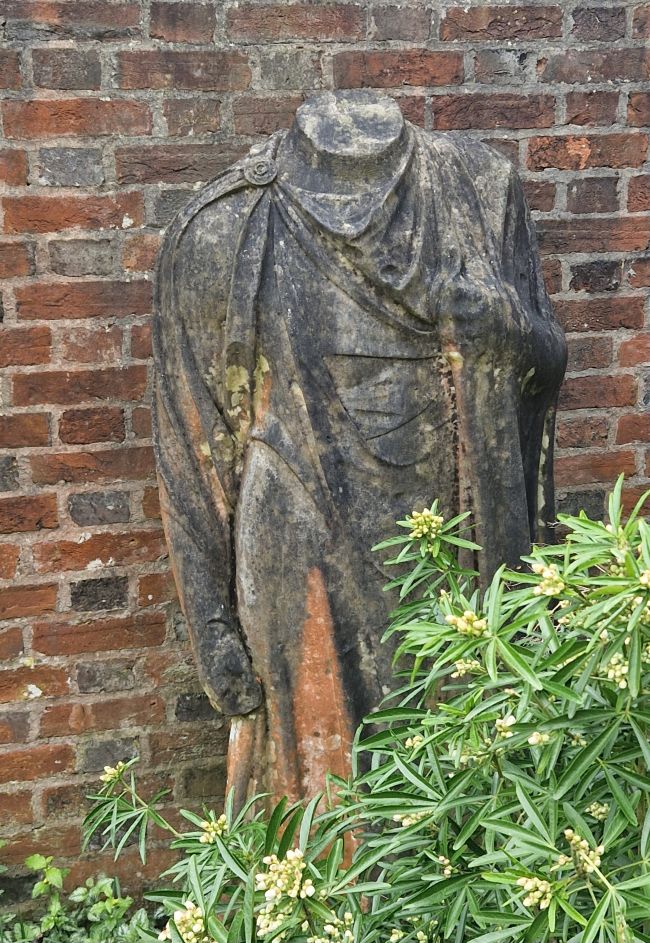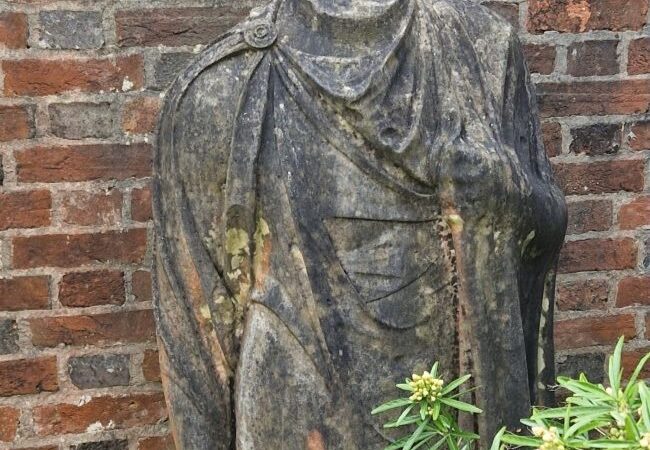
I have for a long time wondered about the story behind the headless Roman-looking statue that has for many decades stood, back to a wall, in the open-to-the-public gardens of Lewes House.
There was little doubt that it had something to do with Edward Warren, the eccentric American antiquarian who lived in the Georgian building from 1890 until his death in 1928, for many years using it as a base for his business, largely pertaining to the buying and selling of classical artworks from Greece and Rome. But why had it remained on the premises, while all Warren’s other artworks – including Rodin’s The Kiss – had been sold off? A phone call to Philip Pople, who worked at Lewes House from 1978 to 2015, just added to the mystery. He learnt from his former colleague Jack Bartnell, that Bartnell had discovered the statue in the early 60s, half buried and covered in undergrowth at the back of the garden. It took five workmen to carry it on planks to its present position, near the back door of the house, where it is cemented into the ground. In Pople’s time working at Lewes House a series of experts had examined the statue, he tells me, and pronounced it to be a Roman original, made of marble, rather than an 18th-century fake.
He also told me about a massive auction in October 1929, of Warren’s impressive collection of artworks, conducted by Lewes-based estate agent Rowland Gorringe. Gorringe was employed by Warren’s former secretary and inheritor Asa Thomas first to sell the collection, then the house. The sale established Gorringe’s reputation as an auction house, which is still thriving today.
My next port of call was Philip Taylor, until this year the managing partner of Gorringe’s, and the keeper of the auction house’s records. Could he show me Gorringe’s first ever 102 auction catalogue, from October 1929, to see if the statue was mentioned? He invited me to his house in Hamsey, where he showed me Roland Gorringe’s own annotated copy of the catalogue. The closest to my statue was ‘Lot 628: A torso of an Apollo, late Greek, or a Roman copy’, sold to one T. Sutton.
But if this Mr Sutton had bought the statue, why did it never leave the property? Delving through the Sussex Express archive, I found my answer. In December 1929, Lewes House had been bought by none other than Thomas Sutton, a Sussex antique dealer who supplied the Bond Street Market, and specialised in buying grand houses and their contents. Within a few years, Sutton flipped the property, which was in 1936 bought by architect Walter Hindes Godfrey, presumably with the statue standing in the back of the garden. By the time Godfrey sold the house to the Chailey District Council in 1945, I can only assume it had toppled over, and been covered in undergrowth, until its discovery some 20 years later. This could have happened while the Lewes House was billeted to Canadian troops during the war.
Case closed? Hardly, but at least now we have a theory, and a fairly plausible one, at that. The location of the statue’s head, however, will presumably always remain a mystery.
Alex Leith

